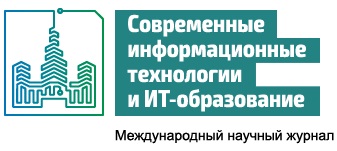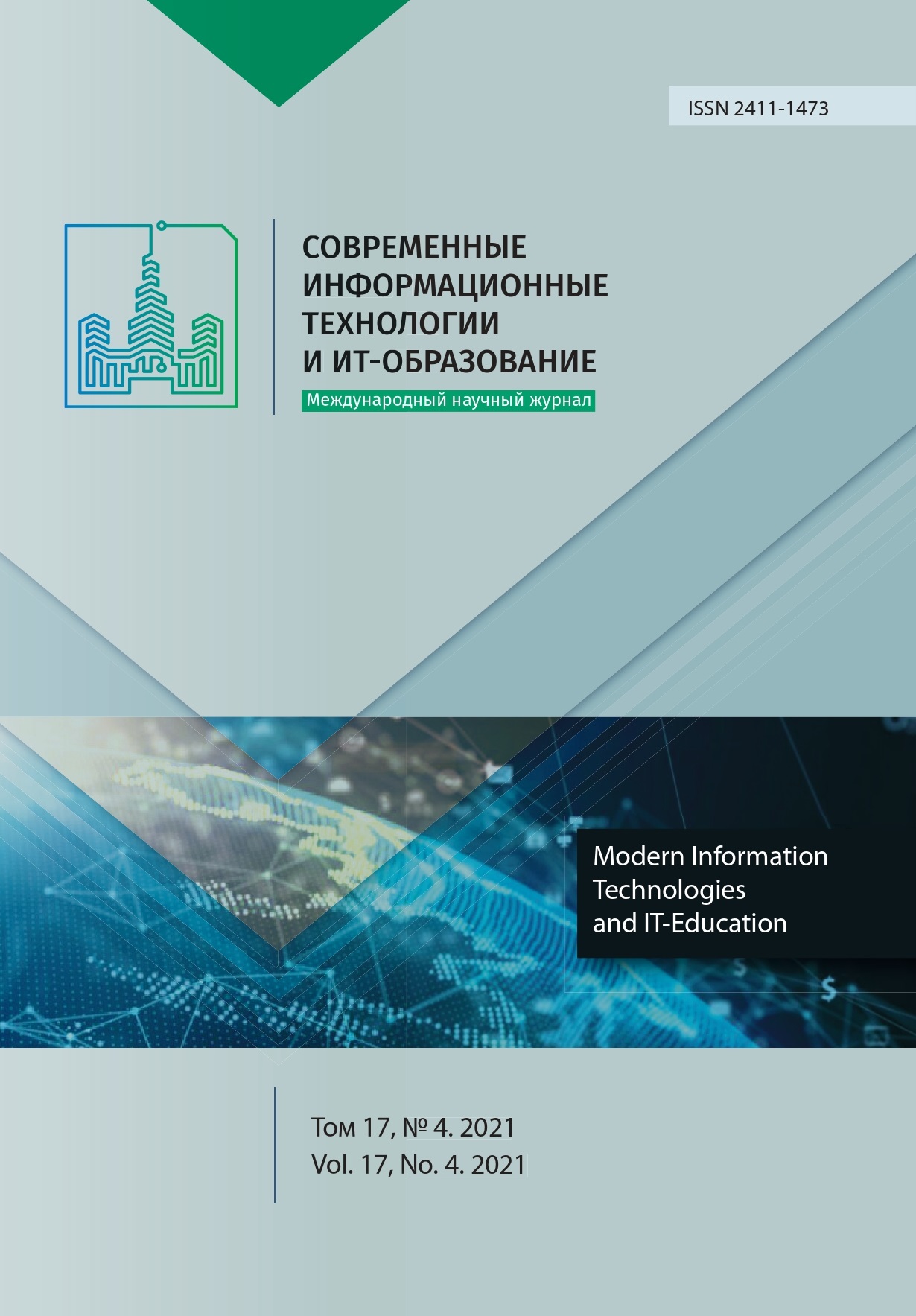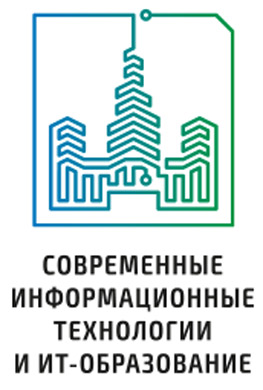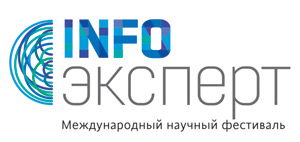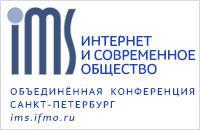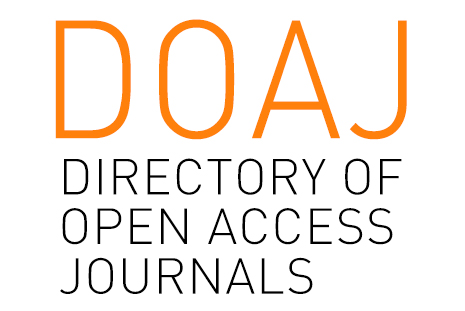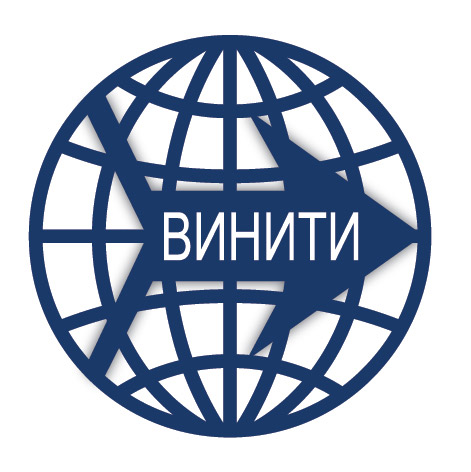Устойчивость различных стационарных точек при малых колебаниях аэродинамического маятника в потоке квазистатической среды
Аннотация
В статье построена и исследована математическая модели малых колебаний аэродинамического маятника в потоке движущейся среды. В качестве модели воздействия среды на тело принята модель квазистатического обтекания пластинки средой. Согласно этой гипотезе, аэродинамические силы, действующие на тело, прикладываются в центре давления. В нашей задаче центр давления является подвижным относительно пластинки. Получены уравнения движения для рассматриваемого тела. Проведен переход к новым безразмерным переменным. Показано нарушение единственности при определении угла атаки. Проведен параметрический анализ областей неоднозначности. Найдены все стационарные точки, являющиеся решениями уравнений равновесия. Показано, что в наиболее характерном положении равновесия, соответствующем состоянию покоя областей неоднозначности нет. Проведено исследование устойчивости различных нетривиальных положения равновесия, в которых реализован критерий Гурвица и изображены области устойчивости. Показано, что силы аэродинамического воздействия для тел с одними формами могут способствовать развитию автоколебаний, а для других затуханию. В математическом пакете MATLAB 18 написан комплекс программ, позволяющий находить стационарные точки, строить области устойчивости для каждой из них и проводить численное интегрирование уравнений, описывающих колебания тела, для того, чтобы подтвердить адекватность построенной математической модели.
Литература
2. Belyakov D.V. The Problem of Studying the Self-Oscillations of an Aerodynamic Pendulum in the Flow of a Medium. Sovremennye informacionnye tehnologii i IT-obrazovanie = Modern Information Technologies and IT-Education. 2020; 16(2):449-459. (In Russ., abstract in Eng.) doi: https://doi.org/10.25559/SITITO.16.202002.449-459
3. Belyakov D.V. Matematicheskoe modelirovanie dvizhenija rotirujushhego spuskajushhegosja v vozduhe ob'ekta [Mathematical modeling of the motion of a rotating object descending in the air]. Proceedings of the Fifth international Aerospace Congress IAC-06. Dedicated to the 20th anniversary of the launch of the MIR Space Station. Moscow; 2006. p. 62-63. (In Russ.)
4. Belyakov D.V., Samsonov V.A., Filippov V.V. Motion Investigation of Asymmetric Solid in Resistant Environment. Vestnik Moskovskogo jenergeticheskogo instituta = Vestnik MEI. Bulletin of Moscow Power Engineering Institute. 2006; (4):5-10. Available at: https://elibrary.ru/item.asp?id=9455853 (accessed 23.09.2021). (In Russ., abstract in Eng.)
5. Belyakov D.V. Development and Features of Mathematical Model of Movement Asymmetrical Autorotating Bodies in Quasi-static to Environment. Mehatronika, Avtomatizacija, Upravlenie = Мechatronics, Automation, Control. 2007; (11):20-24. Available at: https://elibrary.ru/item.asp?id=9609383 (accessed 23.09.2021). (In Russ., abstract in Eng.)
6. Samsonov V.A., Dosaev M.Z., Selyutskiy Yu.D. Methods of Qualitative Analysis in the Problem of Rigid Body Motion in Medium. International Journal of Bifurcation and Chaos. 2011; 21(10):2955-2961. (In Eng.) doi: https://doi.org/10.1142/S021812741103026X
7. Strickland J.H., Webster B.T., Nguyen T. A Vortex Model of the Darrieus Turbine: An Analytical and Experimental Study. Journal of Fluids Engineering. 1979; 101(4):500-505. (In Eng.) doi: http://doi.org/10.1115/1.3449018
8. Lyatkher V.M. High Jet Power Station with Orthogonal Power Units. Alternativnaya Energetika i Ekologiya = Alternative Energy and Ecology. 2014; (7):21-38. Available at: https://elibrary.ru/item.asp?id=21497653 (accessed 23.09.2021). (In Russ., abstract in Eng.)
9. Moskatov G.K., Chepelev A.A. Reliability and safety of feedback flight control systems. Scientific Bulletin of the military-industrial complex of Russia. 2013; (2):41-63. Available at: https://elibrary.ru/item.asp?id=24276464 (accessed 23.09.2021). (In Russ., abstract in Eng.)
10. Paraschivoiu I., Delclaux F. Double multiple streamtube model with recent improvements (for predicting aerodynamic loads and performance of Darrieus vertical axis wind turbines). Journal of Energy. 1983; 7(3):250. (In Eng.) doi: http://doi.org/10.2514/3.48077
11. Alqurashi F., Mohamed M.H. Aerodynamic Forces Affecting the H-Rotor Darrieus Wind Turbine. Modelling and Simulation in Engineering. 2020; 2020:1368369. (In Eng.) doi: http://doi.org/10.1155/2020/1368369
12. Parashivoiu I. Aerodynamic loads and rotor performance for the Darrieus wind turbines. Journal of Energy. 1982; 6:406-412. (In Eng.) doi: http://doi.org/10.2514/6.1981-2582
13. Dosaev M.Z., Samsonov V.A., Seliutski Yu.D. On the Dynamics of a Small-Scale Wind Power Generator. Doklady Physics. 2007; 52(9):493-495. (In Eng.) doi: http://doi.org/10.1134/S1028335807090091
14. Samsonov V.A., Selyutskii Yu.D. Comparison of Different Notation for Equations of Motion of a Body in a Medium Flow. Mechanics of Solids. 2008; 43(1):146-152. (In Eng.) doi: http://doi.org/10.1007/s11964-008-1015-x
15. Samsonov V.A., Selyutskii Yu.D. About Vibrations of a Plate in a Flow of a Resisting Medium. Mechanics of Solids. 2004; (4):24. Available at: https://elibrary.ru/item.asp?id=17636289 (accessed 23.09.2021). (In Russ., abstract in Eng.)
16. Privalov V.A., Samsonov V.A. Ob ustojchivosti dvizhenija tela, avtorotirujushhego v potoke sredy [On the Stability of Motion of a Body Autorotating in the Flow of a Medium]. Izv. USSR Acad. Sci. MTT. 1990; (2):32-38. (In Russ.)
17. Zhang J.Z., Liu Y., Sun X., Chen J.H., Wang L. Applications and Developments of Aeroelasticity of Flexible Structure in Flow Controls. Advances in Mechanics. 2018; 48(1):299-319. (In Eng.) doi: http://doi.org/10.6052/1000-0992-16-034
18. Klimina L.A. Rotational modes of motion for an aerodynamic pendulum with a vertical rotation axis. Moscow University Mechanics Bulletin. 2009; 64(5):126-129. (In Eng.) doi: https://doi.org/10.3103/S0027133009050069
19. Klimina L.A., Lokshin B.Ya. On a constructive method of search for rotary and oscillatory modes in autonomous dynamical systems. Russian Journal of Nonlinear Dynamics. 2017; 13(1):25-40. (In Russ., abstract in Eng.) doi: http://doi.org/10.20537/nd1701003
20. Klimina L.A. Method for Generating Asynchronous Self-Sustained Oscillations of a Mechanical System with Two Degrees of Freedom. Mechanics of Solids. 2021; 56(7):1167-1180. (In Eng.) doi: https://doi.org/10.3103/S0025654421070141
21. Yao J., Yeo K.S. Free hovering of hummingbird hawkmoth and effects of wing mass and wing elevation. Computers & Fluids. 2019; 186; 99-127. (In Eng.) doi: https://doi.org/10.1016/j.compfluid.2019.04.007
22. Hesamian G., Akbari M.G. A fuzzy additive regression model with exact predictors and fuzzy responses. Applied Soft Computing. 2020; 95:106507. (In Eng.) doi: https://doi.org/10.1016/j.asoc.2020.106507
23. Radionov A.A., Gasiyarov V.R. Proceedings of the 7th International Conference on Industrial Engineering (ICIE 2021). Lecture Notes in Mechanical Engineering. Vol. II. Springer Cham; 2022. 849 p. (In Eng.) doi: https://doi.org/10.1007/978-3-030-85230-6
24. Li Q., Hou P. Three-dimensional quasi-static general solution for isotropic thermoelastic medium with applications. Case Studies in Thermal Engineering. 2021; 25:100897. (In Eng.) doi: https://doi.org/10.1016/j.csite.2021.100897
25. Liu X., Xu J., Liu Y. Trajectory tracking and point stability of three-axis aero-dynamic pendulum with MPC strategy in disturbance environment. Assembly Automation. 2021; 41(3):358-368. (In Eng.) doi: https://doi.org/10.1108/AA-11-2020-0181

Это произведение доступно по лицензии Creative Commons «Attribution» («Атрибуция») 4.0 Всемирная.
Редакционная политика журнала основывается на традиционных этических принципах российской научной периодики и строится с учетом этических норм работы редакторов и издателей, закрепленных в Кодексе поведения и руководящих принципах наилучшей практики для редактора журнала (Code of Conduct and Best Practice Guidelines for Journal Editors) и Кодексе поведения для издателя журнала (Code of Conduct for Journal Publishers), разработанных Комитетом по публикационной этике - Committee on Publication Ethics (COPE). В процессе издательской деятельности редколлегия журнала руководствуется международными правилами охраны авторского права, нормами действующего законодательства РФ, международными издательскими стандартами и обязательной ссылке на первоисточник.
Журнал позволяет авторам сохранять авторское право без ограничений. Журнал позволяет авторам сохранить права на публикацию без ограничений.
Издательская политика в области авторского права и архивирования определяются «зеленым цветом» в базе данных SHERPA/RoMEO.
Все статьи распространяются на условиях лицензии Creative Commons «Attribution» («Атрибуция») 4.0 Всемирная, которая позволяет другим использовать, распространять, дополнять эту работу с обязательной ссылкой на оригинальную работу и публикацию в этом журналe.
